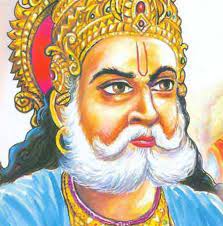(Continued)
India Rubber
India rubber is one name for the natural rubber that comes from the sap of certain trees. Rubber trees that grow in South America and India produce the majority of India rubber. Plum uses its properties of agility, elasticity, flexibility and robustness to cover a wide range of physical endeavours of the characters in many of his narratives.
In Psmith in the City, we come to know of Jow who plays great cricket. He is said to behave as tough as India rubber. In ‘The Inferiority Complex of Old Sippy’, Very Good, Jeeves, Sippy is found chewing a piece of India rubber. In ‘Bramley is So Bracing’, Nothing Serious, Bingo’s baby, when left in Rev. Aubrey Upjohn’s study, does the same.
- In The Inimitable Jeeves, when confessing his having fallen in love with Honoria Glossop to Bertie, Bingo’s eyes bulge, his cheeks get flushed and his ‘Adam’s apple hops about like one of those India-rubber balls on the top of the fountain in a shooting-gallery.’
- In The Mating Season, the cosh which gets used by Jeeves to temporarily knock off Constable Dobbs is said to be an object which is ‘small but serviceable and constructed of India rubber.’
- In Pigs Have Wings, we are told that Lord Emsworth’s writing desk contains not only pens, ink, sealing wax and an instrument which looks like an instrument for taking stones out of horses’ hooves, but also India rubber.
- Those who have gone through Luck of the Bodkins may recollect how Albert Peasemarch, the steward, produces ‘from his trousers pocket a pencil, a ball of string, a piece of India rubber, three pence in bronze, the necklace, a packet of chewing gum, two buttons and a small cough lozenge’, and places these on the table.
- In Indiscretions of Archie, when a girl who has been posing for Archie standing for a solid hour on one leg, holding a tennis racket over her head and smiling brightly, he ventures an opinion as follows: ‘The female of the species is more India-rubbery than the male.’ Modern emancipated females who care for physical alacrity and fitness may heartily approve of this sentiment.
- When it comes to agility in dancing, India rubber legs often get mentioned. ‘The Masked Troubadour’, Lord Emsworth and Others assures us thatFreddie is endowed with them. Money in the Bank tells us that Mr. Trumper is able to forget all about the mystery man with India rubber legs only when being told by Mrs. Cork about an emu she had known which ate aspirin tablets. In Money for Nothing, John, who lacks India rubber legs, proves to be lucky. By the time he has to prove his performance to a girl of high ideals in dancing, the floor has already become congested, allowing him merely to shuffle. This suits his individual style. In Psmith, Journalist Mr. Wolmann is said to have once danced around The Kid with an Indian rubber agility.
- ‘Quick Service’, Indiscretions of Archie tells us that when someone’s neck appears to be growing longer any moment, it is believed to be composed of India rubber. Elsewhere, we run into Mr. Steptoe who is found rubbing his nose on his shirt front. Joss concludes his prospective employer is blessed with an India rubber neck. It is a matter of speculation if he may be alluded to as a contortionist.
- In Money in the Bank, we run into Mrs. Wellesley Cork, the well known explorer and a big game hunter of such India-rubber-necked animals as giraffes.
- In The Girl on the Boat Swenson misinterprets Sam’s motives and starts resisting being pulled away from cash which he regarded as his legacy. He is an emotional Swedish gentleman, ‘six foot high and constructed throughout of steel and India rubber’. He begins to struggle with all the violence at his disposal.
- In The Coming of Bill, Aunt Lora is described by Bill as a human cyclone and even like an earthquake. He feels that the company of a woman capable of taking other people’s lives and juggling with them as if they were India rubber balls is best avoided.
- ‘Have you ever played a game called Pigs in Clover? We have just finished a merry bout of it, with hens instead of marbles, which has lasted for an hour and a half. We are all dead tired, except the Hired Man, who seems to be made of India rubber. He has just gone for a stroll on the beach. Wants some exercise, I suppose.’ (Love Among the Chickens)
Indian Clubs
Many of Plum’s characters have a fetish for remaining as fit as a fiddle. One of the instruments which they happen to depend upon is a pair of Indian clubs.
Something Fresh has Ashe Marson using them. In A Damsel in Distress, when Percie gets criticized by Reggie for the condition of his liver, he uses them. In Coming of Bill, the hero swings them in slow and irregular sweeps while his eyes stare fixedly at the ceiling.
(Continued)
Notes:
The inspiration for this essay comes from the scholarly work done by Ms. Masha Lebedeva, who had earlier whipped up a research paper entitled The Russian Salad by P. G. Wodehouse.
The author expresses his sincere gratitude to an eminent expert on Plummy matters for having spared the time to go through a part of this composition and provide insightful suggestions. Some fans of P. G. Wodehouse have also suggested improvements in its contents.
Thanks are also due to Mr. Suvarna Sanyal for dishing out the main illustration in Part 1; also, to Ms. Sneha Shoney, who has edited the text.
Those of you who wish to cruise through this essay in its entirety may kindly write to akb_usha@rediffmail.com for a PDF version of the complete document to be mailed to them.
Related Posts:

















